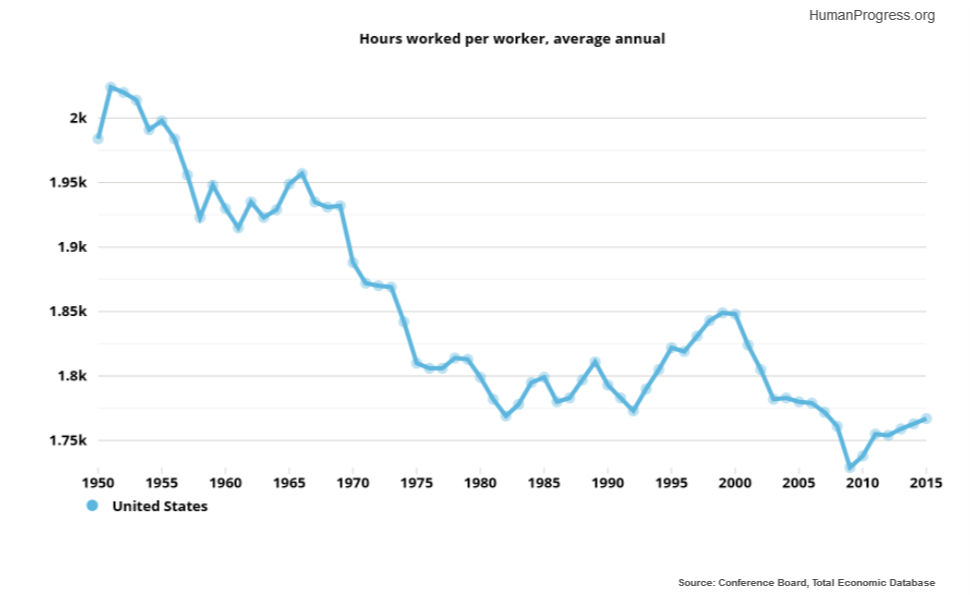Senator Bernie Sanders recently tweeted the following.

Fortunately, the gruelingly long workweek described by Sanders is not the norm. In fact, leisure time has been on the rise. In 1950, an average U.S. worker worked 1,984 hours a year, or about 38 hours a week. In 2015, an average American worker worked 1,767 hours, or about 34 hours a week.

That means that the average U.S. worker had 217 more hours for leisure or other pursuits in 2015 than in 1950. That is about 9 days of extra time.
The 50-hour workweek described by Sanders is more common in China, where the average worker worked 2,432 hours in 2015, or around 47 hours a week. Compare other countries using our interactive dataset.
This first appeared in Cato at Liberty.

